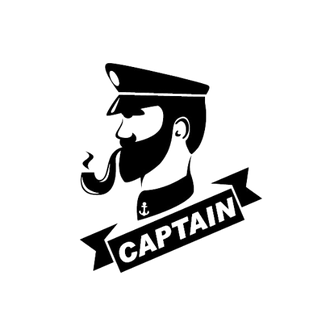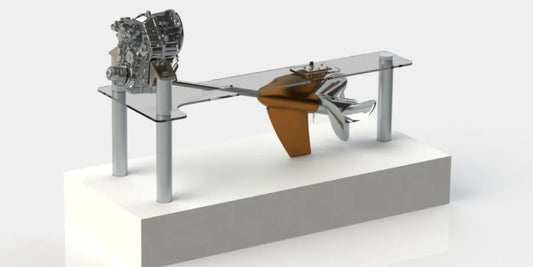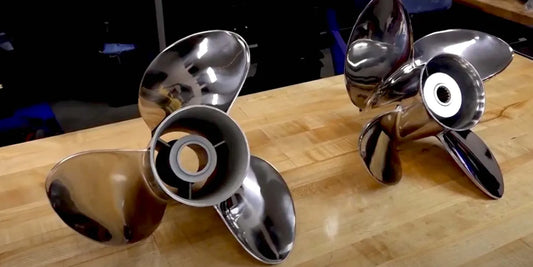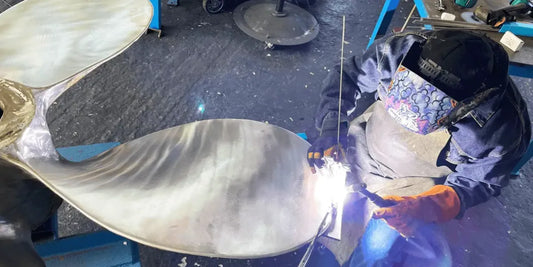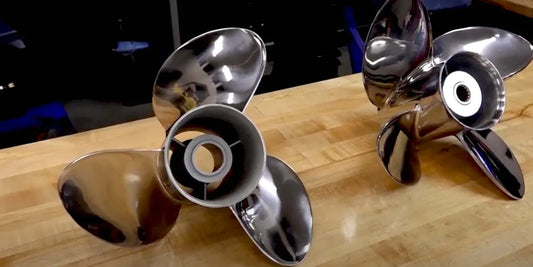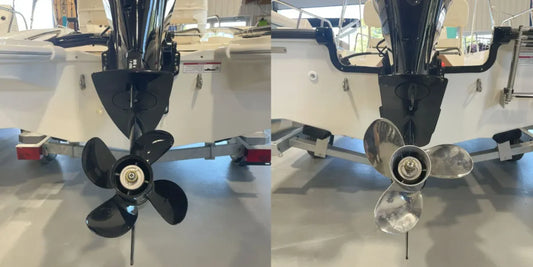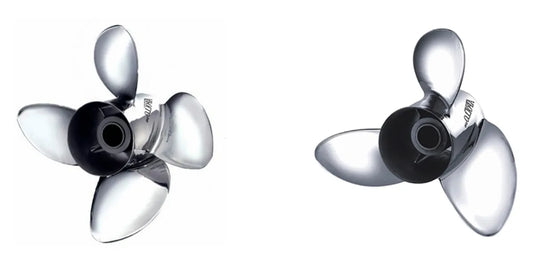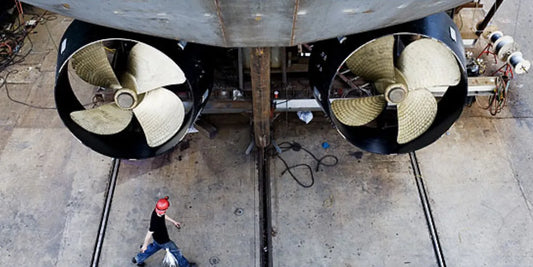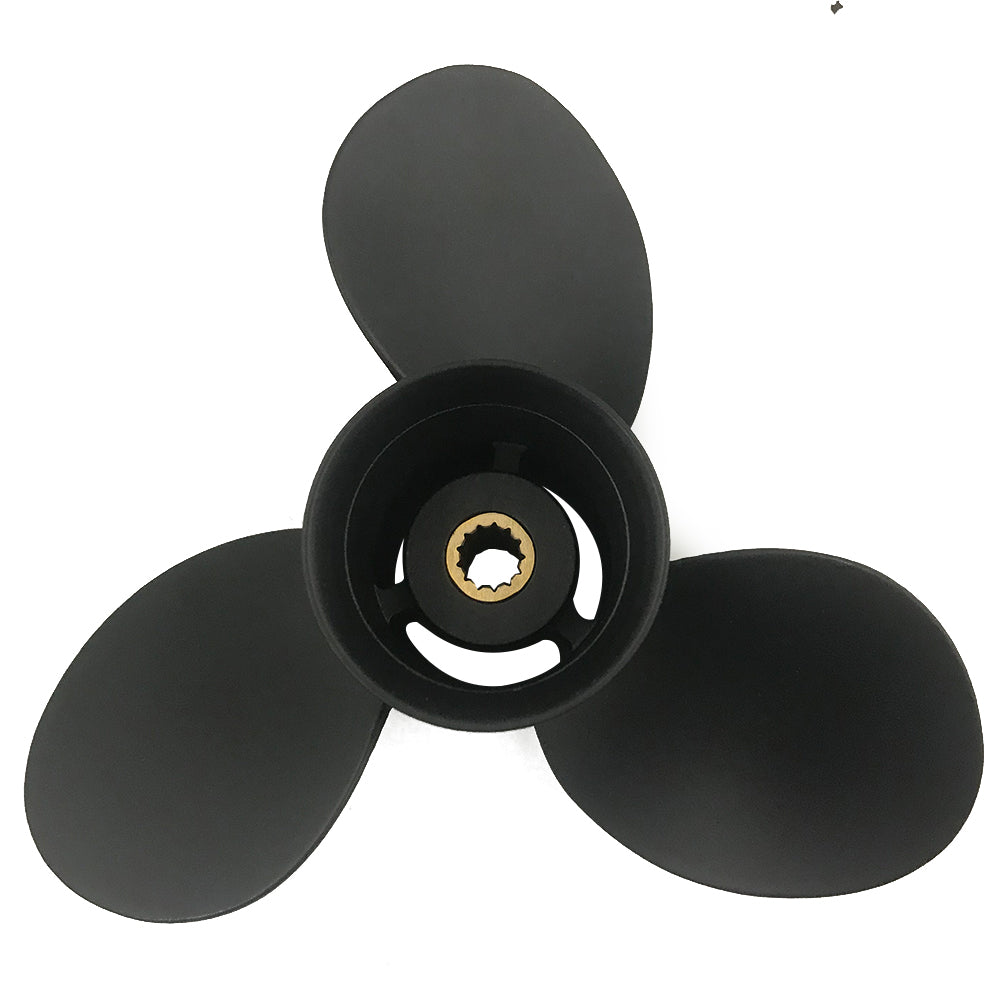Choosing a certain propeller for a boat is one of the critical decisions that must be made, as it can significantly affect the boat's performance, efficiency, and handling. The debated options are usually 2 versus 3 blades, each providing specific benefits and trade-offs depending on the boat's purpose. If high speed in open waters is what you chase, or if you want to ensure good stability and power for fishing trips, then knowing the differences between these two designs is very important. This article will discuss the advantages and disadvantages of 2- and 3-blade propeller boats and give you an idea to weigh what best suits your aims and conditions carefully. So stay with us and discover how the propeller can change your water experience.
Introduction to Propeller Types

Understanding Blade Configuration
The configuration of the propeller blades strongly influences boat performance, efficiency, and usage. Being straightforward designs, 2-blade propellers present less resistance and more speed capability; that is why the two-blade propeller is preferred by light vessels or boats striving to achieve a higher speed at the end of the day. On the other hand, three-blade propellers offer more thrust against one and smoothness with the other; in rough waters, weight becomes essential. Such propellers can also improve hole shots, making them very popular with fishing boats or boats that put a premium on pulling power.
Given the nature of the data, two-blade propellers attain high revolutions per minute, facilitating sprinting. Three-blade propellers prevail on cruising speeds that remain steady and handling cruising speed and conditions. The intention is to maximize speed, be fuel efficient, or have better control and power at operation. Set up your boat to this specific scale of boating needs.
Importance of Propeller Selection
The selection of the right propeller is a very important factor in the performance, fuel efficiency, and proper handling of the boat. Different propeller designs- those that vary in the number of blades, pitch, diameter, and materials- have their own way in which they transfer the engine's power into a moving force. For example, the larger diameter of the propeller can provide more thrust, which is suitable for engines carrying heavy loads or slow-speed maneuvering. In contrast, their smaller diameter may favor slow boats when speed becomes essential. Also, a pitch with rapid acceleration is generally low, but a higher pitch takes over at a long distance as speed.
In addition to the basics, greater thought must be given to newer propeller materials, such as aluminum and stainless steel. Stainless steel will resist wear and tear and increase performance under demanding conditions. Having considered the above with your engine-in-resistance activities, you are propelling the boat only in reaction, not as a key to achieving maximum efficiency. As such, a proper balance in propeller choice will enable the boater to find the perfect marriage between his vessel's powertrain and his particular operational needs, thereby enhancing on-water performance and satisfaction.
Description of 2-blade and 3-blade Propellers
Knowing the difference between a 2-blade propeller and a 3-blade propeller is vital to improving the ship's performance. The 2-blade propeller is favored for its simplicity and efficiency, less drag, and higher speeds, especially in lightweight and faster boats like sailboats or racing boats. This design lessens resistance and promotes acceleration, making it popular for applications where agility and reduced weight are regarded.
By contrast, 3-blade propellers produce a greater thrust and provide better handling under heavy loads or rough water conditions. The extra blade presents more surface area for smoother operation, better grip, and improved low-speed handling. That would make 3-blade propellers the most appropriate for recreational boats, fishing vessels, and crafts for which assurance of good, constant performance is paramount.
The IHS data also show 2-blade props tend to have a marginal advantage in top speed while inducing more vibrations due to asymmetric thrust distributions. Conversely, 3-blade propellers stand between the top speed and durability ranks, are fuel-efficient, and can provide a smooth and constant thrust. Given the type of boat, the service condition, and the performance characteristics it desires, the boaters can make informed decisions that would serve their specific needs on the high seas.
2-Blade Propeller: Features and Benefits

Efficiency and Speed
If simplicity and speed are counted among the advantages of a 2-blade propeller, this feature is often highly desired. With reduced blade surface area, 2-blade propellers set little drag inside the water and tend toward attaining high speeds, especially in light and high-performance boats, such as sail vessels or racing boats. They furnish less resistance; therefore, minimal engine power is needed to bring the ship to optimum speed levels, which might also give good fuel efficiency, subject to appropriate conditions.
Yet, 2-blade propellers can sometimes present problems with stability and thrust for heavier or larger vessels. However, they may have maximum speed potential in the right environment. That said, their limited contact area with the water can translate into slight reductions in consistent propulsion power when faced with rough waters or when working with fully loaded boats. This does not nullify their appeal for those boatmen who think speed is first and work with lightweight setups designed around streamlined efficiency. With proper engine design and consideration of actual use cases, 2-blade propellers can give their users a speed advantage without the performance trade-offs.
Weight and Maneuverability
In weighing all these options for propellers, vessel performance is heavily considered. Lightweight propellers, such as 2-blade, typically produce less drag and hence allow for acceleration that is quicker and smoother. This is the preferred option for smaller boats where responsiveness and agility are key priorities. Operators will experience improved maneuverability because of the light prop-weight, making the execution of precision turns, adjustments to changing water conditions, and maintaining optimum control at higher speeds easier.
Now, the sporadic advancement of materials technology also offers multi-blade propellers that are durable and lightweight. This, therefore, means that such options address the weight reduction while ensuring the most consistent thrust possible, all in a single package: something every boater may wish for that truly balances the handling capacity with steady propulsion. The multi-blade propeller, designed well for large vessels or ones under full load, provides the torque required to maintain control without sacrificing maneuverability. It is preferred within more adversarial surroundings or under varied operational requirements.
Combining efficient weight distribution and aerodynamically effective design means that today's selections span many boating needs. Always consider the type of vessel, load capacities, and performance goals as part of the weighing process to ensure the right propeller choice will not compromise weight management or handling precision.
Typical Applications for the Two-Blade Propeller
The two-blade propeller has been used in any situation where simple efficiency and the least possible weight are primary factors. These propellers are found on light aircraft, small drones, and certain classes of marine vessels, including sailboats; their minimal design principle results in less drag and improved fuel efficiency, which are ideal characteristics for applications that need less power.
Two-blade propellers, for example, are used in aircraft for differing purposes; light sport aircraft and single-engine planes often have 2-blade propellers, providing thrust while keeping engine stress to a minimum. Likewise, for unmanned aerial vehicles (UAVs), 2-blade designs compromise lift efficiency and battery consumption, which is crucial for long flight times. However, their use is more prevalent for marine applications in smaller boats and sailboats where space constraints, lightweight design, and quieter operation are desired.
Research conducted in a study suggests that 2-blade propellers seem to be more environment-adaptive, working well in low-speed operations or resisting fouling in underwater environments. Their simple design makes them low maintenance and cheaper to maintain, attributes that make their capabilities far-reaching and efficient in different industries.
3-Blade Propeller: Features and Benefits

Power and Performance
Known for combining thrust, efficiency, and smooth operation, the three-blade propeller has become the truly idealized one. There has never been a greater generation of power by the two-blade propellers than by the three-blade ones, from a power context; therefore, the three-blade ones generally always remain the preference for the commercial and the recreational applications wherein high performance is demanded. These well-built thrust devices provide an excellent propulsive force for fast starting and grip in challenging conditions with hydroplane engineering.
With an increase in the science of materials and hydrodynamics, the 3-blade design has only become better for its functioning: precision blade shaping and correct pitch angles are some of the advancements introduced so that the propellers generate the least amount of cavitation and maximize thrust. This endows boat owners with fuel efficiency and reduces operating costs; hence, considering a 3-blade propeller is a cost-efficient and green solution to sustain in the long run.
In addition to propulsion strength, three-blade propellers resist vibrations at a higher speed, giving a smoother and quieter ride, alleviating weighty issues in passenger comfort. From fishing boats, mid-size yachts, and work barges, these propellers accommodate various vessel types for convenience in design. The force combined with efficiency signifies that the three-blade propeller is the solution that power seekers feel comfortable leaning on.
Stability and Control
Lately, propeller developments have directly impacted stability and control, overriding performance in maritime applications. Using materials and prime design, they keep the boat from sinking in heavy seas or under powerful currents. Another aspect is that the high maneuverability decreases the risk of stressing the system, which appears to bring increased smoothness to navigation, thereby increasing safety for the operators and passengers. The ability to maintain equilibrium-speed controls and directional challenges gives the uplift when vessels are engaged in towing commercial transportation or leisure cruising.
From an engineering standpoint, variable pitch mechanisms are a good example of modern advancements that improve control throughout variable loads and speeds. Such innovations somehow allow adjusted optimum thrust and more fuel-efficient operations without jeopardizing stability in real-time. For example, with an adjustable propeller system, a vessel can instantly change operational requirements for environmental factors, giving it added reliability when undertaking a long journey. This advanced capability, supported by material strength, whether stainless steel or composite, ensures propeller systems can survive lengthy use while continuously operating at maximum performance. These advancements, therefore, directly tie into further improved safety, efficiency, and operational excellence in the marine journey.
Typical Applications of 3-Blade Propellers
3-blade propellers are used in the marine sector because they balance efficiency, performance, and durability. One of the most significant uses is recreational boating, where the propellers provide just the right balance of speed against fuel economy. Many speedboats and personal watercraft use three-blade designs to expedite acceleration and shore up cruising speed.
3-blade propellers also benefit small ferries and fishing boats in commercial operations. The aerodynamic shape allows smooth operation and increased thrust in mild and adverse water conditions. This is a big help in maintaining scheduling, thereby supporting market operation stability. Further, 3-blade configurations are often chosen for medium-sized yachts as the best compromise between power and noise attenuation, and hence smooth comfort.
Three-blade propellers are also preferred in competitive marine sports like boat racing because of their high agility and acceleration. Their minimal drag in water allows racers to go faster and maneuver better. Through fusion with innovation, three-blade propellers keep redefining their functionality as the benchmark for performance in different maritime activities.
Comparative Analysis: 2-Blade vs 3-Blade

Pros and Cons of 2-Blade Propellers
Pros
Efficiency at Lower Speeds: 2-blade propellers can perform well under lower engine speeds and minimum drag requirements. As such, they are well-suited for small boats and light boats.
Cost-Effective Solution: Fewer blades could make the 2-blade propeller cheaper, owing to fewer materials and engineering complexity. This appeals to budget-conscious buyers.
Simple Maintenance: The design's simplicity facilitates inspection, cleaning, and part replacement, and hence shortens the time involved with maintenance.
Less Water Turbulence: These propellers cause less water turbulence, allowing for smoother operations in some environments.
Cons
Less Thrust: These types are known to have less thrust than the 3-bladed ones, making them unsuitable for heavy or high-performance ships.
Less Stable: Slight stability or vibration issues may arise with the two-blade type in rough sea conditions.
Less Compatible: Because of their low thrust, two-blade types generally cannot be used on bigger vessels requiring higher performance and high-speed efficiency.
Operation Noise: The loud noise that two-blade types give may strongly deter noise-sensitive applications such as recreational or leisure activities.
When choosing propeller types, it is key to balance their advantages and disadvantages against common vessel-specific criteria like weight, speed demand, and operating environment.
Pros and Cons of 3-Blade Propellers
Being balanced in performance and efficiency, 3-blade propellers have been recognized in marine applications everywhere. The considerations offered below weigh the pros and cons of the concept:
Pros
Speed and Efficiency: 3-blade propellers balance thrust and efficiency, making them excellent in applications requiring high speed without considerable energy consumption.
Performance Versatility: They are suitable for almost every type of vessel and provide good all-around performance for recreational and commercial use.
Smooth Handling: Compared to two-blade propellers, the three-blade setup generally provides a softer feel, translating to better stability and more precise maneuvering, especially at higher speeds.
More Affordable: With a simple design and less material consumption than four or five-blade propellers, three-blade propellers can be obtained at relatively low prices without compromising much on performance.
Cons
Less Thrust in Heavy Loads: While suitable, efficient, and competent under normal operating conditions, 3-blade propellers provide less thrust for heavy-load vessels requiring excessive towing or driven through heavy seas.
Noisier: The primary drawback of such a design for a leisure boat or other noise-sensitive environments is that 3-blade propellers are noisier and tend to impart more vibration than multi-blade propellers.
Reduced Top-End Performance: When considered for vessels that demand the ultimate in performance and speed, such as racing boats, the 3-blade design could have disadvantages, mainly in efficiency and thrust, compared to 4-blade or 5-blade ones.
Less Fuel-efficient in Some Applications: Depending on the application and vessel type, 3-blades may occasionally be a little less fuel-efficient than the later designs.
Choosing whether to use 3-blade propellers comes down to criteria particular to each vessel, such as loading, usage, and operating environment, plus budget considerations. Their balanced design has provided excellent compromises for a number of applications, going against the cost, performance, and efficiency front.
Key Factors in Choosing Between Blade Types
Choosing the blade type is very important and depends on multiple performance and operational considerations that should be evaluated to make the right choice. Among the most important considerations are efficiency, thrust, and noise. Multi-blade configurations like the 4-blade or 5-blade version provide smoother operation, less vibration, and more thrust at low speeds, thus making them suitable for heavy-duty applications where stability is required.
However, 3-bladed propellers are acknowledged as the best compromise between speed and efficiency. They usually perform better at high speeds and are suitable for lighter vessels or those with fuel economy. Hydrodynamic testing shows that improved blade geometry and material optimization, using improved materials like stainless steel or composite alloys, help improve the performance of both canopy configurations.
Another essential factor is cavitation, which occurs when water pressure drops around propeller blades, reducing performance and increasing wear. Blade count, combined with a proper choice of pitch and diameter, plays a vital role in preventing the damaging effects of cavitation. The operator must also consider the environmental factors, such as water depth, salinity, and debris entanglement, as these will dictate longevity and maintenance regime.
The last choice depends on meeting specific vessel requirements with a clear-cut idea of what the operator intends to prioritize. Through materials science and computational fluid dynamics, the operator is assured that the solution can be tailored to almost any requirement, ensuring a compromise between performance and cost.
Conclusion and Recommendations

Final Thoughts on Blade Selection
For me, selecting a specific blade for a vessel is about a compromise between performance, durability, and price. Each vessel incurs operational needs that a particular blade should best accommodate. Material composition, hydrodynamic performance, salt concentration, and frequency of exposure to debris all weigh into the equation on the issue of the best choice. Therefore, I intend to holistically analyze all these parameters and then point out what is essential: Speed, fuel costs, or less maintenance?
I strongly promote using computational fluid dynamics and contemporary materials when making decisions. These tools and technologies support data-driven decision-making, offering better performance and longer life. Mixing technical information with an extensive understanding of operational environments will, I believe, allow operators to achieve a managed blade solution tailored towards maximizing efficiency while minimizing obvious costs. Choosing blades is beyond just an operational option; it is investing strategically in the future prosperity of the vessel.
A Guide to Boat Owners
When selecting the right propeller blade for your vessel, my foremost recommendation is that the blade's specifications best match your boat's unique operational goals and conditions. The operations involving the kind of water to be navigated, the engine capacity of your vessel, and its intended speed are all factors that directly influence the choice of blade. An evaluation of these parameters guarantees that the engine's performance, fuel economy, and wear and tear are harmonized with the proper blade. A solution that fits your exact needs saves you from unnecessary add-ons while ensuring reliability in the long run.
I also heavily emphasize seeking expert collaboration or conducting extensive research into blade materials, pitch, and diameter, since they are of the utmost significance toward that end of the performance curve. Stainless steel, for example, would perhaps offer high-performance vessels the best services in durability and efficiency. At the same time, aluminum blades would be cost-effective for the lighter recreational use. Bearing maintenance in mind would go a long way: regular inspection and cleaning can significantly prolong the life of your propeller and keep it working at optimal efficiency.
If I had to put it in a nutshell, investment in the propeller should therefore factor in performance, cost-effectiveness, and durability. Being conscious about the choice, who has imparted to it while thinking of the specific operational realm of your boat itself, liaison will make this investment a livelihood supporting means that work for the ship in performance, which in turn saves time, resources, and effort worth hundreds in the forthcoming years.
Propeller Technology: The Future
Thinking about the future makes me see a landscape in propeller technology where material and design developments, and sustainability will dominate it. The current promising trend would be making lightweight, high-strength materials like composite propellers. These also contribute to durability and improve fuel efficiency by lessening the total weight of the vessel. In addition, smart technology will soon be incorporated, with an array of sensors embedded into propellers that could inform boat operators in real-time on their propellers' performance, wear, and efficiency, allowing the best scheduling of predictive maintenance and optimized operations.
Another fertile area of development in propeller technology is the exploration of green solutions. In response to the rising concerns about environmental impact, companies are investigating propeller designs that would reduce underwater noise pollution and thus fuel consumption, hence greening the operation. For instance, developments in hydrodynamic shaping combined with electric propulsion systems provide a glimpse of a future focusing on quiet and energy-efficient propulsion technologies. In addition to satisfying regulations with severe environmental constraints, these technologies also present better performance solutions in highly demanding operational environments.
In my final analysis, propeller technology ensuring adaptability and sustainability will be the lifeblood of tomorrow. Whether for sporty, recreational purposes or specialized for commercial tasks, the propeller industry is geared up to service the twin requirements of performance and environmental sustainability. Tracking these trends allows me to direct myself and capitalize on these innovations for better results, and keeps me one step ahead in the rapid development of the past.
Reference Sources
- 2 blade prop vs 3 blade - iBoats Forum
- Two-Blade vs Three-Blade Prop - Cruisers & Sailing Forums
- Difference between 2 and 3 blade propellers - Offshore Electrics Forum
- 2 blade VS. 3 blade prop's - RC Universe Forum
- Thread: 3-Blade vs. 2-Blade Prop - Team Kitfox Forum
Frequently Asked Questions (FAQs)
What are the outstanding differences between 2 2-blade versus 3 3-blade?
Performance-wise, the main differences between a 2- and 3-blade propeller are. A 3-blade, with a larger blade area, generally provides better thrust and smoother operation than a 2-blade. Furthermore, a 3-blade is the best choice for high horsepower motors because it handles the extra horsepower better, thus giving better acceleration and higher top speed. The two-blade, however, produces less drag and might be an advantage on slow cruising applications. It all depends on what you might use your boat for: high-speed runs or slow cruises.
What is the effect of the blade area on the propeller?
Blade area defines the overall performance of the prop. Larger blade areas can bear higher thrust, which is helpful for heavier boats or powering through rough waves, whereas smaller blade areas found in 2-blade props can lessen drag and let the boat go at a higher top speed with low RPMs. Thus, when comparing 3-blade versus 2-blade parameters, it is evident that blade area might severely affect the handling and efficiency. So, selecting the right blade area is essential to maximize your boat's performance for its particular needs.
Are 3-blade props more efficient than two-blade props?
A 3-blade prop is usually considered more efficient than a 2-blade prop in terms of thrust and acceleration. The more surface area provided by one extra blade helped in better propulsion and smoother operation. Cutting in, however, is the opposite, where a 2-blade prop could create much less drag and hence can be selected on occasions where high speed is considered. When evaluating 3-blade vs. 2-blade options, one must consider the kind of boating they plan to do, as each offers good points depending on the situation.
How does the number of blades affect vibration and noise?
Propeller vibration and noise production vary with the number of blades. In principle, the 3-blade prop creates less noise and vibration than the 2-blade one. This is because the additional blade allows the load to be distributed evenly, leading to a smoother run. But 2-blade props might be quieter at lower RPMs, making them good in some cruising scenarios. Hence, if you want the most silent and smooth ride, the 3-blade prop is the one to choose, especially in rough winds and seas.
Which prop provides better acceleration: a 2-blade or a 3-blade?
In general, a 3-blade propeller has better acceleration than a 2-blade propeller. The additional blade generates increased thrust to help boats reach higher speeds faster. This assists heavier boats that require power to achieve good performance. However, a 2-blade prop can allow a higher top speed in special conditions due to the less drag it produces. A final decision on a 2- or 3-blade prop should depend on your boat's weight, motor horsepower, and preferred acceleration characteristics.
Can I use a 2-blade prop on a heavier boat?
Using a 2-blade prop on a heavier boat is possible, but it may not be the best option. Generally, a 3-blade prop is indicated for heavier boats owing to the extra blade offering better thrust and present handling characteristics than a two-blade prop. Selection of a 2-blade prop can produce much drag and poor acceleration, especially at higher RPMs. If you select a 2-blade, consider the design and pitch to obtain the best performance possible for your heavier boat. Ultimately, you want to pick a good propeller setup to ensure efficient propulsion and performance for your whole boat.
